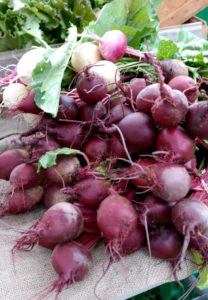What is gleaning?
In the farmers’ market context, gleaning refers to the act of gathering unused / unsold food at the end of market to redirect to local food pantries and other emergency food service sites. End-of-market gleaning programs provide an alternative to feeding your edible surpluses to your animals or compost pile and provide quality fresh produce to people in need.
How can my market start a gleaning program?
An important first step is to check with DACF about necessary licensing. Call Ronda Stone in the DACF’s Dept of Quality Assurance at (207) 287-3841; she will be happy to offer advice on best practices. In some cases, donations to gleaning efforts are tax deductible, but you’ll want to check with your accountant about that, as it can be complicated (see this post on the subject).
You will also want to confirm coverage of donated goods under your farm and/or market insurance policy. There is a Good Samaritan Law in place to protect from some liability regarding donated food. Nevertheless, you should double-check with your agent to make certain that your good deed is not going to cause issues for your market or farm.
Click here to connect with your local UMaine Cooperative Extension Maine Harvest for Hunger program coordinator. The mission of the Maine Harvest for Hunger is to  connect fresh, locally-grown produce with food pantries, homeless shelters and soup kitchens that provide food to those in need. They may be able to help your market connect with local food pantries to pick up surplus from your farmers’ market at the end of each market day.
connect fresh, locally-grown produce with food pantries, homeless shelters and soup kitchens that provide food to those in need. They may be able to help your market connect with local food pantries to pick up surplus from your farmers’ market at the end of each market day.
In addition to Cooperative Extension gleaning initiatives, many other organizations have gleaning programs and/or may be able to assist your market.
- The Maine Gleaning Network
- Healthy Communities of the Capital Area – contact Renee Page at [email protected] or (207) 588-5020.
- Healthy Acadia – Click here to read more about the Downeast Gleaning Initiative.
- Good Shepherd Food Bank
- Mid Coast Hunger Prevention Program
You can also find local emergency food service sites in your community on this “Emergency Food Assistance Program” map published by the DACF and connect with them directly.